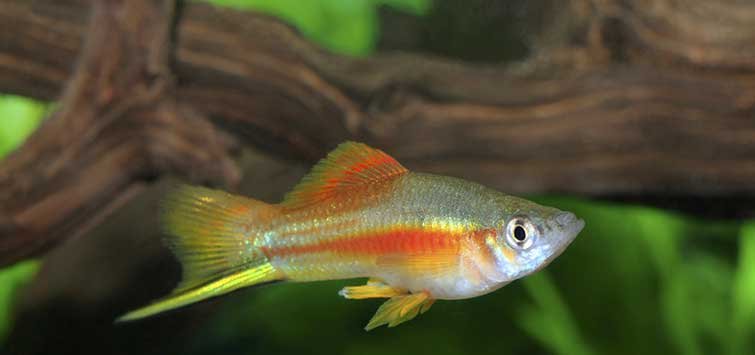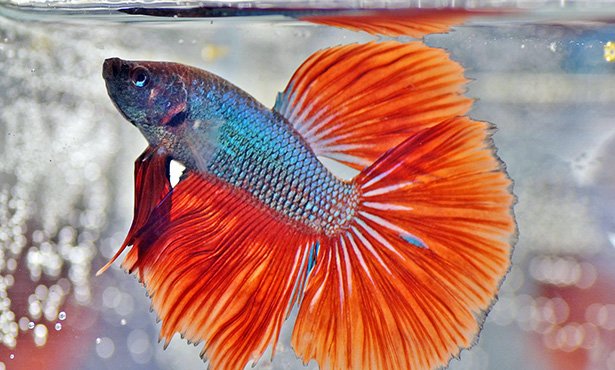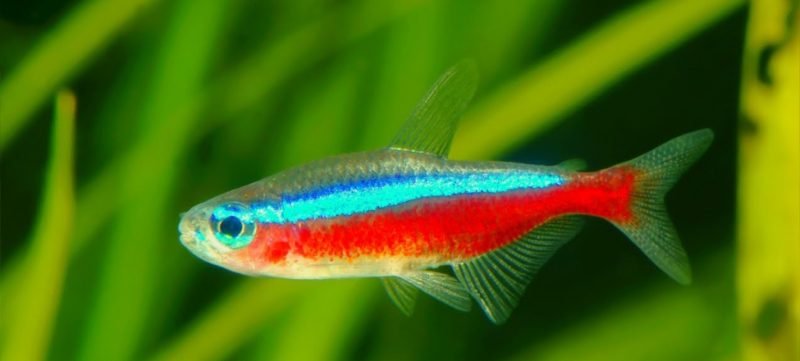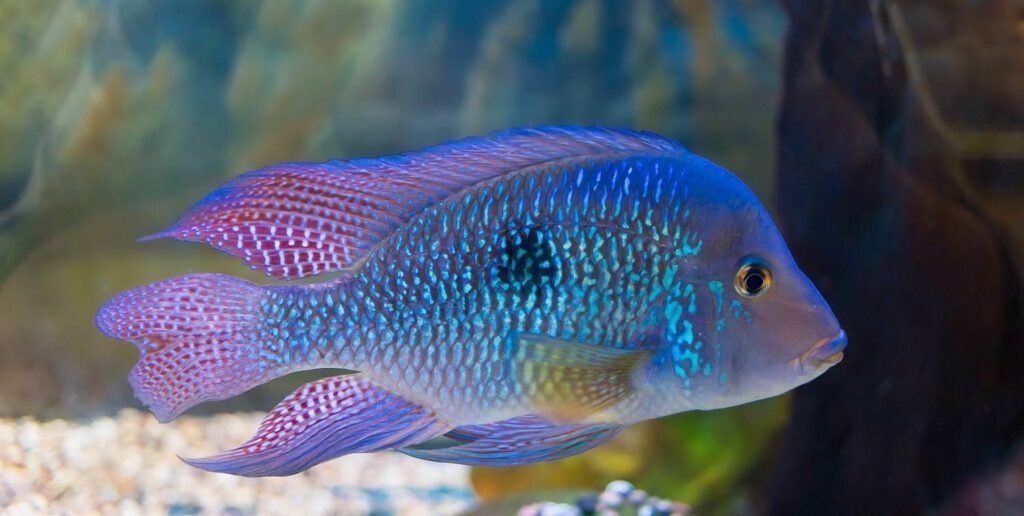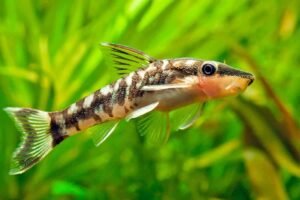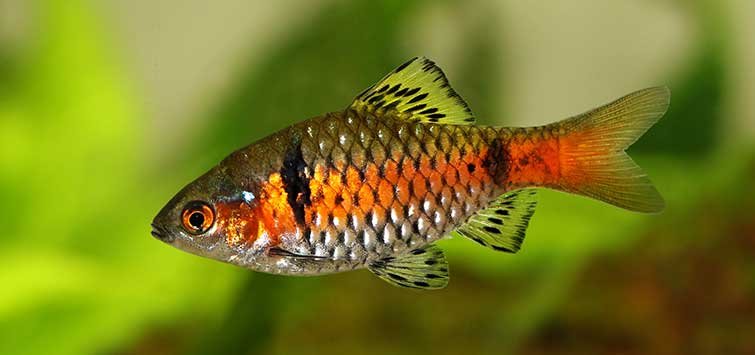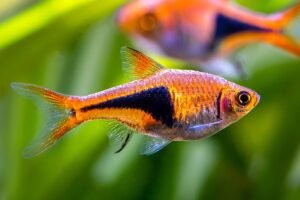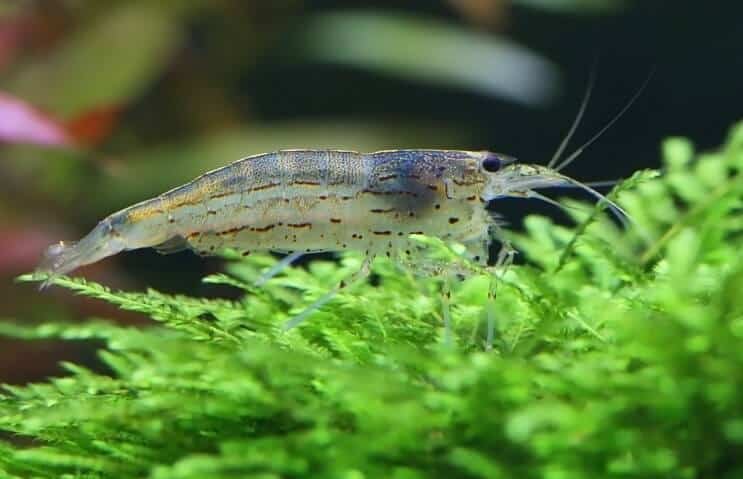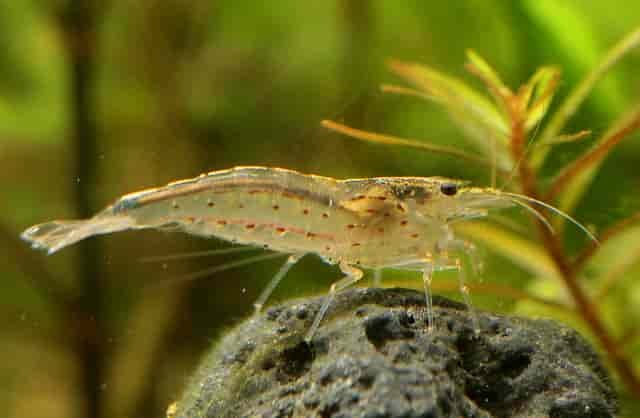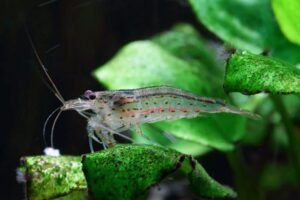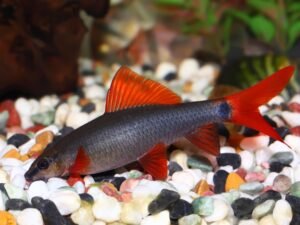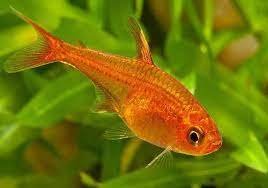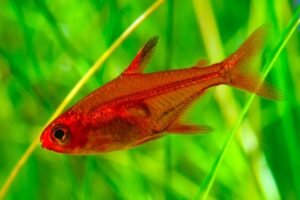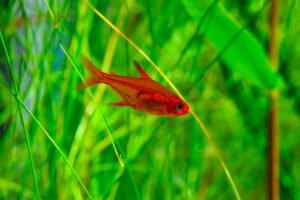A fish lying on the bottom of a tank could be doing so for a variety of reasons like water quality imbalances, illness or intoxication. It’s necessary to note that some fish use the floor surface to relax, so recognising the symptoms of an unhealthy fish is important.
Why is My Fish Lying on the Bottom of a Tank?
In most cases, a fish will lie close to the floor of the tank when ill or injured, and there may be various signs that can help you perceive this and/or find the cause.
Such signs can include weakness, loss of appetite, heavy breathing, slow movements and loss of buoyancy. We elaborate on this below.
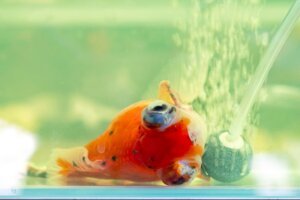
Appetite Loss
If your fish isn’t eating and remains mostly at the bottom of the tank, there’s a high chance it may be unwell. Illnesses such as dropsy, swimming bladder diseases and common constipation can cause appetite loss.
Prices pulled from the Amazon Product Advertising API on:
Product prices and availability are accurate as of the date/time indicated and are subject to change. Any price and availability information displayed on [relevant Amazon Site(s), as applicable] at the time of purchase will apply to the purchase of this product.
Breathing Heavily
If your fish seem to be laying on the floor of the aquarium and gasping for air, it’s most likely linked to water parameters. Your tank water could have ammonia poisoning, nitrate poisoning or temperatures that are too hot. In this case, you’re best to fix water conditions as quickly as possible. If the problem is heating, cool the tank slowly as sudden changes can cause extra stress on your fish.
Laying Upside Down
Being upside-down is an indication that the fish may have swim bladder disease. This is where there has been a malfunction in the shaping of your fish’s bladder, and it can’t balance properly. Make sure to check and maintain healthy water parameters in the tank and work at treating some of the core causes of the disease, such as constipation.
In extreme circumstances, don’t hesitate to take your fish to the vet.
Laying on Side
Your fish may not always be injured or sick when it’s lying on the bottom of the tank. If it’s laying upright or on its side with no other worrying symptoms showing, it may just be relaxing or asleep.
You can give your fish more décor, plants and hiding options if you want them away from the substrate. There’s plenty of sleeping platforms and artificial caves you can buy specifically for this purpose.
Is it Normal for Betta Fish fish to be lying on the bottom of a tank?
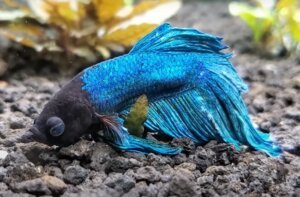
Like many other fish, bettas may be lying on the bottom of the tank for a variety of reasons, some harmless. Understanding healthy and unhealthy symptoms of your betta can help you determine the best ways to help them.
Sleeping Betta Fish
A healthy betta naps often. Providing a resting place for your fish to sleep on or in can help ease the stress of
Prices pulled from the Amazon Product Advertising API on:
Product prices and availability are accurate as of the date/time indicated and are subject to change. Any price and availability information displayed on [relevant Amazon Site(s), as applicable] at the time of purchase will apply to the purchase of this product.
However, if you aren’t sure if your betta is simply tired, watch for unusual symptoms that might indicate illness. For example, feebly swimming, drooping fins or having no appetite.
Older Bettas
Some older betta fish don’t have the stamina to swim strongly, so it may be more common to see it resting near the bottom of the tank. The average lifespan of a betta is between 3 and 5 years, and slow, gentle water flow is essential for them in their later years.
Betta isn’t Resting
If your betta is showing symptoms of having an illness or injury, it’s important to check and maintain healthy water parameters straight away. Reduce water flow in the tank and do your best to correctly diagnose the problem. If symptoms continue, you can take your betta to the vet.
Diseases That Can Cause Fish Lying On the Bottom of a Tank
There are a range of diseases that may cause your fish to lay on the bottom of the tank. Noticing a disease’s first sign can help you deal with the illness at its earliest stage.
If you’re noticing symptoms that indicate one of these diseases, always quarantine your fish in a hospital of quarantine tank as a precaution. Such tanks are a stable and confined environment of healthy water patterns and temperatures, to assist in nursing your fish back to health.
Sickness & Disease
In most cases, fish are more likely to get an infection or disease because of a weaker immune system, often caused by stress or bad environmental conditions.
Prices pulled from the Amazon Product Advertising API on:
Product prices and availability are accurate as of the date/time indicated and are subject to change. Any price and availability information displayed on [relevant Amazon Site(s), as applicable] at the time of purchase will apply to the purchase of this product.
Diseases like ich, bloat, dropsy, and others can affect more vulnerable fish. Staying ahead of water conditions and ensuring parameters are within the acceptable range can help prevent many of these.
Ammonia Poisoning
It’s pretty simple to monitor for ammonia poisoning. You can use an ammonia test kit to find the concentration in your aquarium.
To prevent high ammonia levels, ensure that your tank is kept clean, with regular maintenance on water changes, cleaning the substrate, avoiding overfeeding and having an effective filter.
Nitrate Poisoning
Similarly to ammonia poisoning, you can test the tank water for nitrate concentrations. If there’s evidence of nitrate poisoning, it’s important to perform significant water changes.
Fish with toxic nitrate poisoning might be breathing heavily and show pale discoloration, usually laying at the bottom of the tank.
Aggressive Fish
Aggressive fish can sometimes be the cause of fish laying on the bottom of the tank, by attacking and injuring them. It may be necessary to remove the aggressive fish, or place the timid fish in a floating basket to avoid confrontation.
Swim Bladder Disease
Swim bladder disease, as we mentioned before, is the temporary or permanent deformity of a fish’s bladder that causes them to swim unbalanced and fall upside-down.
This disease is frequently caused by overfeeding or the inability of an animal’s body to digest some food. Thawed green peas or daphnia can help combat it.
Once your fish feels better, it should start swimming as usual. If there’s no change however, see a vet for suitable medication.
Other Stress-Related Issues
Sometimes a fish that’s been harassed, or is under stress, may sit at the bottom of the tank. You can try offering it more hiding spots with plants and rocks, or move it to a private tank to avoid these problems.
Other Possible Causes of Fish Lying On the Bottom of a Tank

There are other causes not related to disease that could cause your fish to lie on the bottom of the tank.
Displaying Territorial Behavior
Some territorial fish may stay on the bottom level of the tank and claim a portion of its land. If it’s posing a danger to other fish in the aquarium, it may be necessary to move the aggressive fish into a new tank.
Water Temperature is Too Cold
A sustainable temperature for your aquarium is about 77 degrees Fahrenheit. If the temperature gets below these levels, the metabolism of most tropical fish starts to slow down, causing them to feel lethargic and weak, lying at the bottom of the tank.
In this case, use an in-tank heater to gradually increase temperatures. Make sure there is no sudden temperature change however, as it could put unnecessary stress on your fish.
Water Temperature is Too Hot
Higher temperatures make it more difficult for oxygen to be absorbed in the water during gas exchange. This can lead to your fish breathing heavily and sitting stagnant at the bottom of the aquarium. Warm water may also increase the metabolic rates of fish, making them eat more and produce more waste.
Again, it’s important to gradually shift temperatures back to normal, avoid extreme changes. You can use a fan to cool off the tank slowly, and an air pump to restore oxygen levels.
Water Quality and Unstable Parameters
Significant changes in water quality can lead to having unstable water parameters. This means your fish may be more likely to be affected by toxic wastes and stress that can impact its health. If your fish is lying on the bottom of the tank, make sure to check the aquarium water and parameter levels first.
The Aquarium is Too Small
It’s a common misconception that fish can thrive in small, empty tanks. In reality, this can create some unnecessary stress on your fish. Along with that, empty tanks give fish few options to lie on and they may choose to sit on the bottom of the tank instead.
Creating a vibrant and interactive tank can keep your fish healthy and thriving. Adding plants, decor, caves and most importantly, space, all work to make a strong environment.
Resting
Some fish follow the same overall sleep pattern as humans and a lot of the time, they use the bottom of the tank to rest. Bettas are known for finding interesting places to sleep, like tucked in corners or in the foliage.
If you notice your fish sleeping in the morning, consider changing you light’s night settings and leaving your fish in a dark, quiet environment at night to ensure they get the necessary rest.
Extreme Current
Some fish don’t cope well in powerful water flow and can result in a lot of stress if there’s a strong current coming from filters or pumps. To decrease water flow from your pump, you can attach a sponge filter, or redirect the flow towards plants and decorations.
It’s common for fish to rest low in the water after being removed from a fast-flowing tank.
Bottom Dwellers and Feeders
Many fish and aquatic animals are bottom dwellers and naturally stick to the floor of the tank. For example, loaches, corys, catfishes and plecos. Other fish are bottom feeders, meaning that they prefer the floor of the aquarium because that’s where they can find food easily. These fish are usually feeding all of the time and work to keep your tank fairly clean.
Older Fish
Aquarium fish generally have a lifespan between 3 to 8 years. As they age, they have a higher chance of resting near the bottom of the tank as they naturally become more lethargic. If your older fish tends to have short breaks to rest between periods of activity, there’s not much need to worry.
Newcomers
Newcomer fish in unfamiliar areas may choose to lay at the bottom if your tank lacks other refuge areas. However, healthy fish should recover quickly and leave the substrate to explore their new home.
Tips for Beginner Fish Keepers
Some fish, like bettas, spend a bit of time lying at the aquarium floor. It’s recommended to do some research as to what activity levels you should expect with your species of fish. Other tips include:
- Regularly check your equipment is on and working properly
- Regularly check that you fish are eating and behaving in their usual fashion
- Set up a periodic cleaning routine for the tank, for changing the water and vacuuming the substrate
- Don’t overfeed your fish
Final Thoughts – fish lying on the bottom of a tank
If your fish is laying at the bottom of the tank, make sure to double check water quality and tank settings before trying to diagnose the problem.
Ultimately, getting familiar with your fish’s behaviour and habits can help you notice when something doesn’t seem quite right. This way, you can look after your fish in the most effective way possible.
.

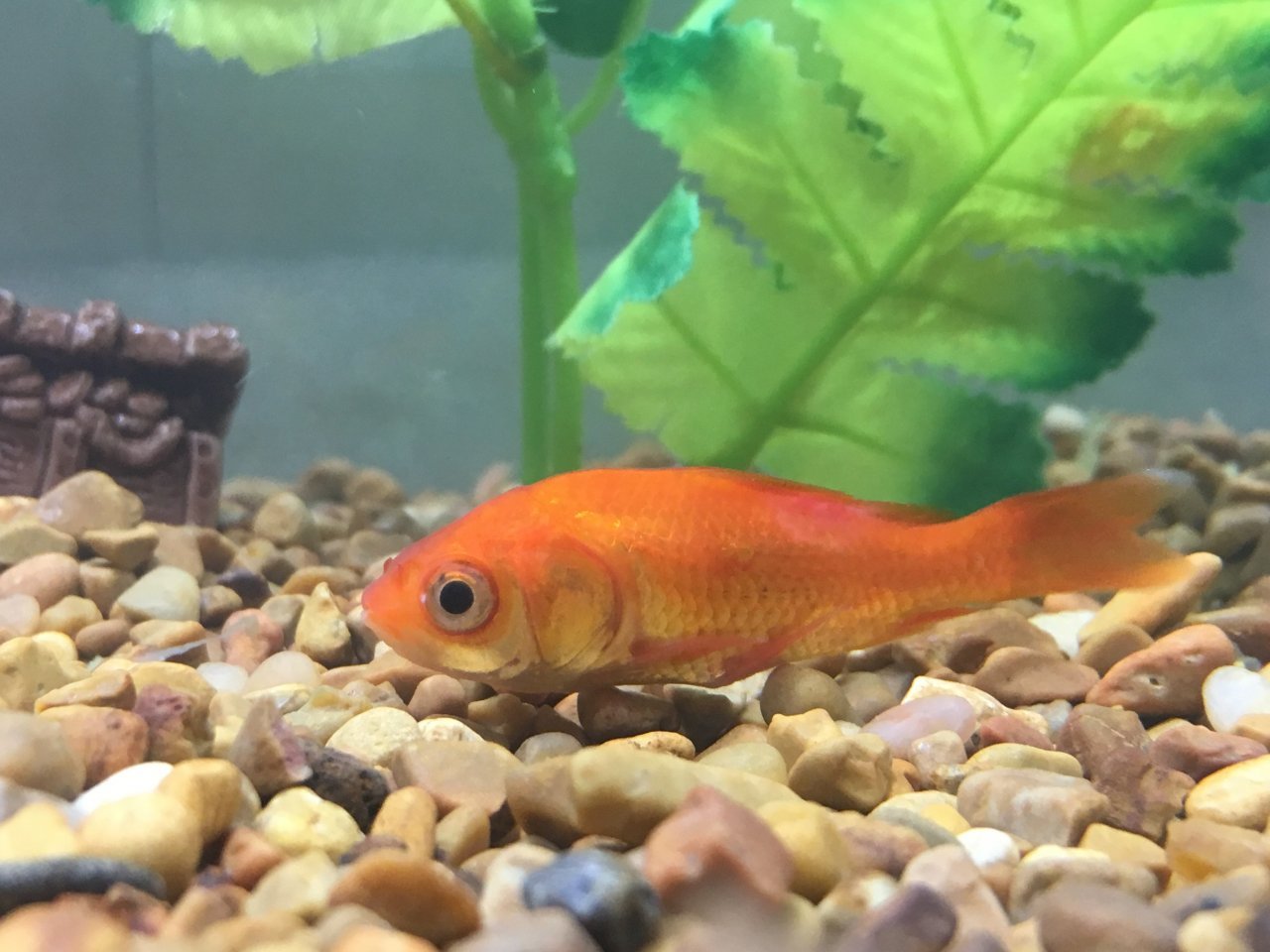



![[Updated 2022] Rotala indica Care Guide: Planting, Growing, and Propagation [Updated 2022] Rotala indica Care Guide: Planting, Growing, and Propagation](https://aquariumhunter.com/wp-content/uploads/2021/10/Rotala-rotundifolia.jpg)









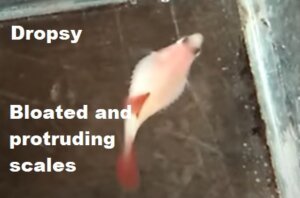 Dropsy is not disease-specific; it occurs when his belly swells and causes scales to protrude sideways.
Dropsy is not disease-specific; it occurs when his belly swells and causes scales to protrude sideways.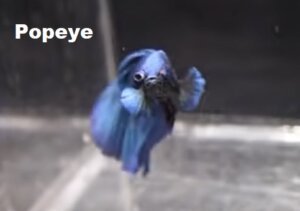 More than one culprit may be identified for pop-eye, but regular tests and water changes will be the first thing you need when seeing eye bulging in your fish.
More than one culprit may be identified for pop-eye, but regular tests and water changes will be the first thing you need when seeing eye bulging in your fish.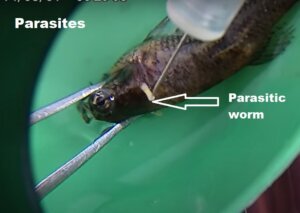 Symptoms usually involve reddening blood vessels, white feces, and swollen belly.
Symptoms usually involve reddening blood vessels, white feces, and swollen belly.
![[Complete Guide] Best Fish for 5 Gallon Tank (With Pictures) [Complete Guide] Best Fish for 5 Gallon Tank (With Pictures)](https://aquariumhunter.com/wp-content/uploads/2021/10/Painted-Fire-Shrimp-3_1024x1024.jpg)
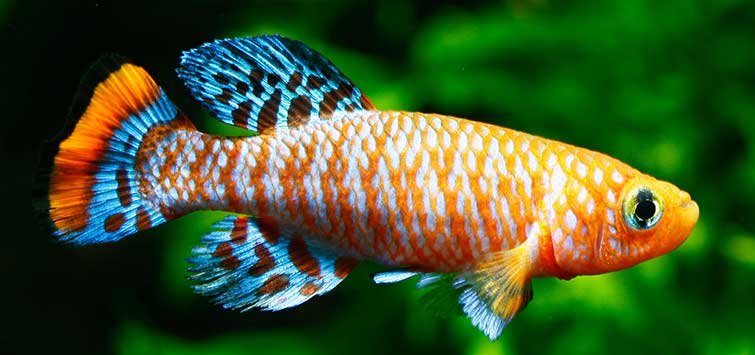

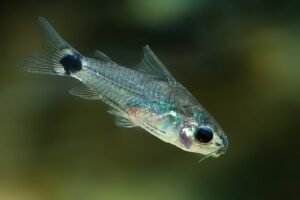
![How Long Can Betta Fish Go Without Food? [Complete Guide] How Long Can Betta Fish Go Without Food? [Complete Guide]](https://aquariumhunter.com/wp-content/uploads/2021/09/iStock-644996948_itthipolB-1-1.jpg)




![[Betta Fish Food] Ultra Fresh - Betta Pro Shrimp Patties, 50% Sword Prawns + Akiami Paste Shrimps, All Natural Protein, Rich in Calcium, for Betta's Healthy Development and Cleaner Water, Betta Food](https://m.media-amazon.com/images/I/4154e7UwHYL._SL160_.jpg)


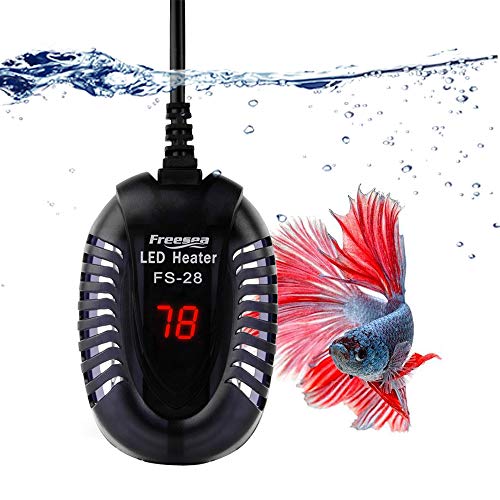





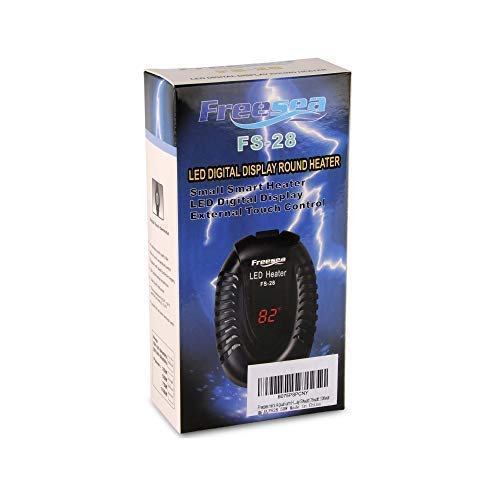
![[Complete Feed Guide ] How long Betta fish can go without food?](https://aquariumhunter.com/wp-content/uploads/2021/09/Best-Plants-for-Betta-Fish-300x250.jpg)
 Betta fry, which are baby bettas, get nutrients from the egg during the first few days of their life. After that, they can be fed 3-4 small meals a day.
Betta fry, which are baby bettas, get nutrients from the egg during the first few days of their life. After that, they can be fed 3-4 small meals a day.![[Quick Signs] How to Tell if a Molly Fish is Pregnant? [Quick Signs] How to Tell if a Molly Fish is Pregnant?](https://aquariumhunter.com/wp-content/uploads/2021/09/2.jpg)
![[Must Read] Best Fish For a 20-gallon Tank (With Pictures ) [Must Read] Best Fish For a 20-gallon Tank (With Pictures )](https://aquariumhunter.com/wp-content/uploads/2021/09/196_danios_ahoy.jpg)
